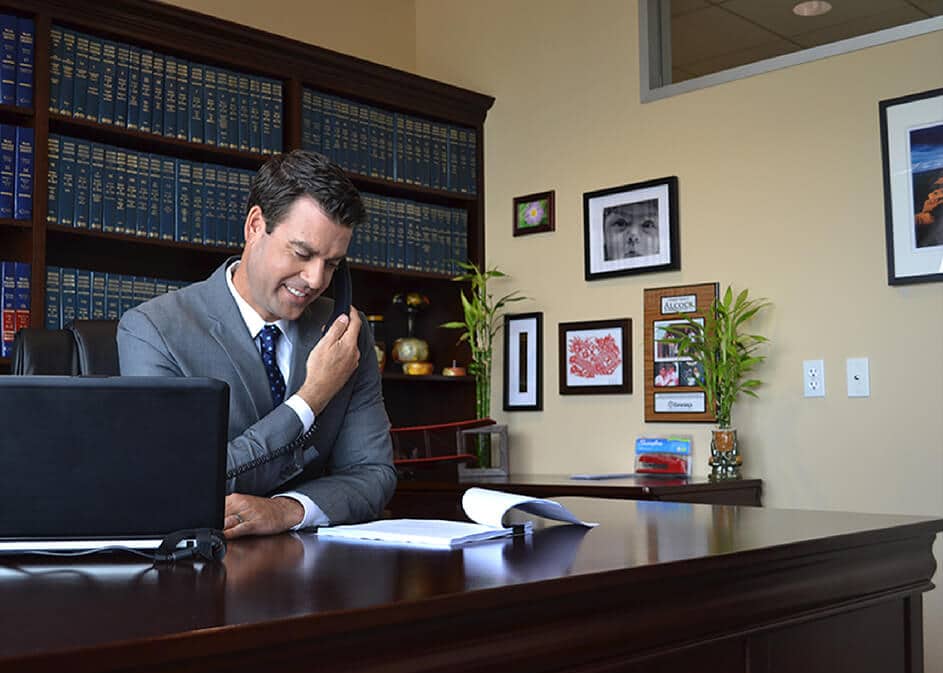DUI ATTORNEY IN PHOENIX: HOW ACCURATE IS BREATH TESTING ANYWAY?
DUI Attorney in Phoenix: How accurate is breath testing anyway?
Posted by DUI Attorney Nick Alcock
In Arizona, many people who are arrested for DUI offenses are asked to blow into an Intoxilyzer machine. It doesn’t seem necessary to point out that a person’s breath is different from a person’s blood. Obviously, then, this machine engages in some mathematical gymnastics to come up with a number that reflects the concentration of alcohol in the veins of the test subject. Given that fact, how accurate is the DUI Intoxilyzer anyway?
DUI attorneys will tell you anecdotal stories that cause them to doubt the accuracy of the Intoxilyzer machines. Over the years I have spoken with scores of people that swear they consumed 2 or 3 drinks, but blew a result well over a .15. Technically this should not be possible. Now I’m not naïve. Some clients will shade the truth. Others will suffer lapses of memory. But over and over we hear similar stories. It is fair to say that these machines sometimes give readings that don’t make sense. But then you learn about how they actually work.
For a breath testing device to be operational in Arizona, it has to be maintained and tested to a 10% margin of error. Technicians run a known sample through the machine. The concentration of this sample is .10. So long as the sample records a reading between .09 and .11, the machine will allow a subject to blow into it to record a valid result. End of story, right? Not so much.
Examining the science a little further, we learn that there are human variables that directly affect a breath testing machine’s result. These human variables are different from the known sample, because people’s bodies and behavior vary much more than a tube of compressed air.
So what affects a DUI Breath Alcohol reading? Lots of things, but I’ll stick to the top five.
1) Body temperature. Put a pot filled with water on a stove. The hotter the stove, the more steam you see rise from the pot. Likewise, the hotter the human being, the more alcohol is transferred from the blood to the air in the lungs. If you had 1000 people blow onto a thermometer, you would see a huge variation. A breath sample that is 2 degrees F hotter than the machine assumes will record a breath alcohol reading that is 10% higher than actual.
2) Breathing Patterns. The faster you breathe, the faster you cycle air through your lungs. This dilutes the amount of alcohol present in the breath sample. Rapid breathing can lower a breath sample by as much as 15%. However, the operators of the machine are trained to look for hyperventilation. If they see a subject breathing too fast, they wait for the pattern to slow. It is harder to detect slow breathing. People who are crying may breathe much slower than normal. Slow breathing can increase a breath sample by 15%.
3) Red Blood Cells. A professional athlete who runs 10 miles a day in Denver is going to have many more red blood cells in proportion to the rest of the blood than normal. More and bigger red blood cells are able to pass more alcohol into the breath. This variation can affect a breath sample by 5%.
4) Alcohol in the Mouth: Remember that the breath machines are designed to test the amount of alcohol that passes from the blood to the air in the lungs. People also have alcohol in their stomachs. If any of that alcohol makes its way into the mouth before a test, it can drastically affect a breath alcohol reading.
5) Partition Ratio: Imagine that you have a bucket of water. You pour a bottle of vodka into the bucket and then cover it with Saran Wrap. After waiting a few hours, if you tested the air in the bucket above the water you would find alcohol in the air. Let’s say you found 10 units alcohol. If you then poured another bottle of alcohol into the bucket, recovered for a few hours and retest the air. You could expect to see double the amount of alcohol in the air—20 units. Intoxilyzers use this principle (called Henry’s law) to extrapolate the breath alcohol level. Problem is, peoples lungs aren’t buckets and the proportion of alcohol in the blood to gaseous alcohol in the lungs is not the same for each person. The difference in ratios can affect a result by more than 20%.
So if you were pulled over for a DUI and submit to a blood test, you will be much more likely to pass the test if you are a fast breathing, hot, sedentary person who naturally has fewer molecules of alcohol gas pass from his blood to his lungs than typical. Of course, if you are the opposite type of person, you might find yourself speaking to a DUI attorney–swearing that you only had two drinks with a reading way over the legal limit.
If you have a DUI case in Arizona and would like to speak with a DUI attorney over the phone, give us a call at 602-989-5000. Nick Alcock DUI lawyer.

REPRESENTATION YOU DESERVE
Here at Alcock and Associates our team and staff are dedicated to helping and representing YOU. The first step is to understand your case. We will take the time to get to know you and your legal situation so that we are best able to answer all of your questions. After your initial consultation with our attorneys, you will know what you are facing and what can happen to your case.
EVERY CONSULTATION IS COMPLETELY FREE AND COMPLETELY CONFIDENTIAL.
Top Rated Phoenix Attorneys






It is essential that you are aware of our website policies, as they detail how we protect your data and ensure transparency in the use of your information. Please read our Privacy Policy.
